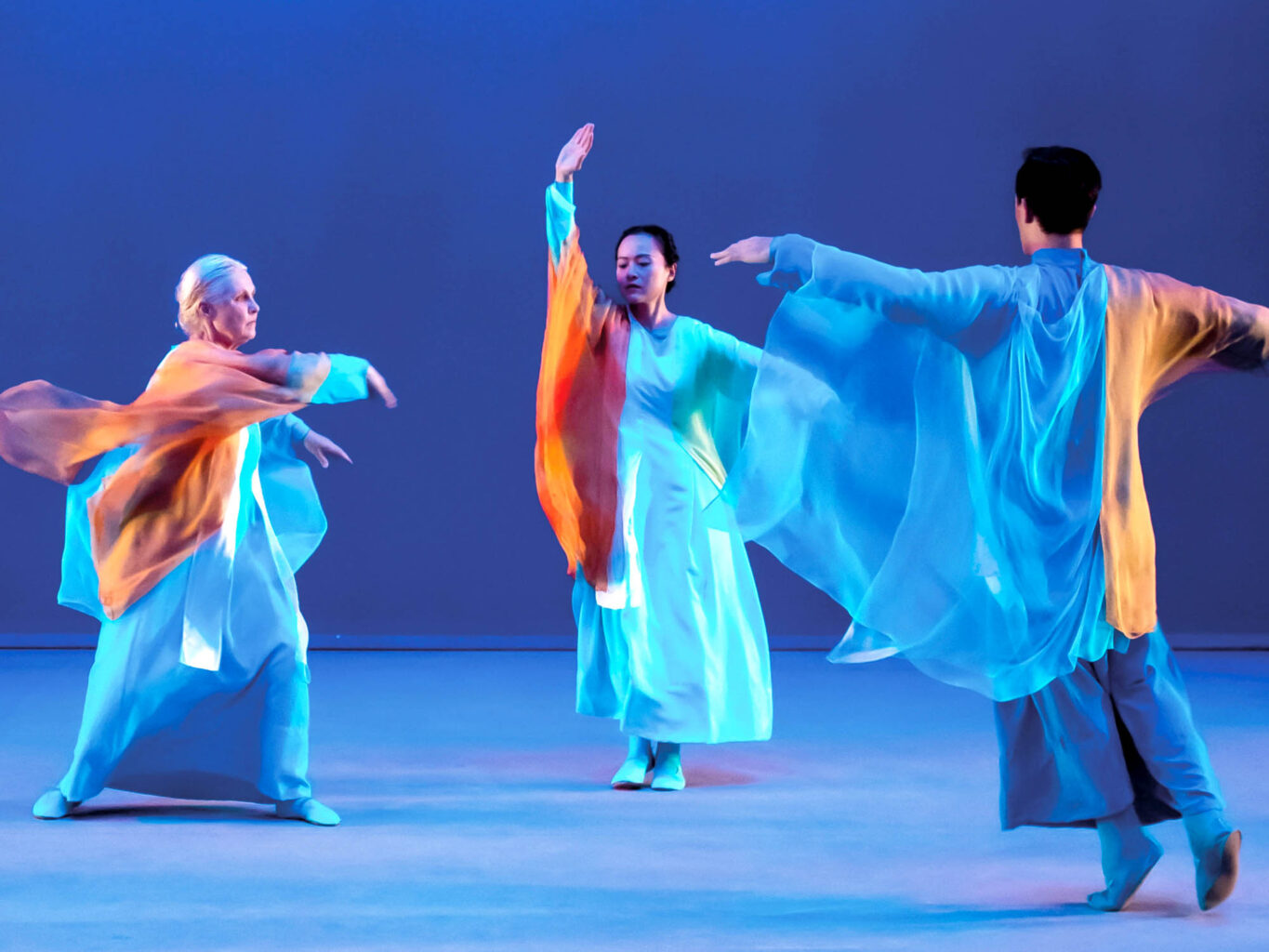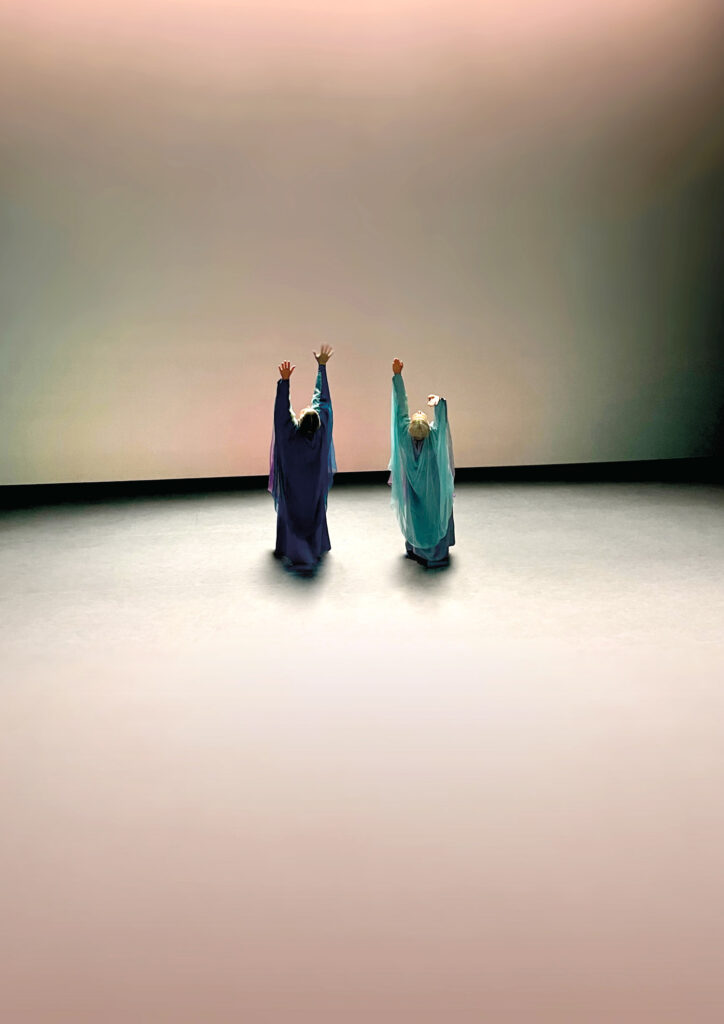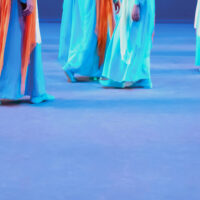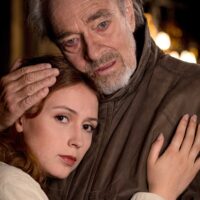‹Wegspuren› [Vestiges on the Path] is the name of the new program of the Goetheanum Eurythmy Ensemble. A piano trio by Schubert and a dramatic sonata for cello and piano by Lera Auerbach are mixed with texts by Rudolf Steiner and Hilde Domin. It is always about the seemingly self-evident human walking, but the question is often difficult to answer: «How do I find the next step?» An interview with Tanja Masukowitz, Silke Sponheuer, and Rafael Tavares, the artistic directors of the program. Questions by Wolfgang Held.
How did your new Eurythmy program come about?
Tanja Masukowitz With the question of how we can take the next step. With every step, we decide into which future we want to go. We were interested in this Eurythmically.
Silke Sponheuer ‹To walk› is the most elementary image, an event of how we make the future the present and the present the past. If we simply remained seated, this flow would not take place. We all follow goals that we often do not achieve because life sends us on detours and has something more interesting in mind for us. It all starts with the first step.
Rafael Tavares For whom there are endless possibilities, each step makes the environment appear different, opening up a new space. We have chosen some pieces of music, from Schubert to Auerbach, to bring that to the experience.

Christian Morgenstern said: ‹He who knows nothing about the goal will not find the way.› Today the opposite seems true: ‹He who knows nothing about the path will not find the destination.› Is this also your observation?
Masukowitz In our program, we have a short quote from ‹Die Arbeit der Vögel› [The Work of Birds] by the writer Marica Bodrožić. She writes it very similarly: «We cannot walk a path permanently and simultaneously see the wide floating air of the birds on ourselves from above. Sometimes we have to get started, without thinking. The departure must take control of the goal and the view on our feet.» Without observing ourselves and wanting to control everything, sometimes we should just start to walk.
Taveres It is a moment when the will unfolds without being constrained by our thinking. We discover: There is a wisdom of will, a wisdom of our body.
Walking involves balance, symmetry, and stumbling. This is reflected in the music of Schubert and Auerbach, right?
Sponheuer We were looking for this contrast between the two pieces. Franz Schubert’s Piano Trio radiates calm and security, while Lera Auerbach’s Sonata for Cello and Piano is full of breaks and surprises. Interestingly, as a Russian originally living in Ukraine, she is familiar with all the rifts of our time. Now she lives in the US. With her music, you don’t know where you’re going. Every step is a risk. Now you think you’re in such a beautiful waltz, and then something comes in between – a game of willpower and disturbance. Only at the end of her sonata does the path become apparent – a wonderful moment. Schubert’s composition is so different: Here, our soul can dive in, sing, and let go.

Masukowith At every step, I ask not only where I am turning, but also where I stand. Where am I located? What is my point of view, from which I then get moving?
Taveres Marica Bodrožić’s motif, even lost in thought, to go your own way, resounds several times in our program. And every time, we hope you will hear it with different ears and see it with different eyes, because you are on a path where perspectives are constantly developing. While the music of Lera Auerbach awakens us through its breaks, with Schubert, it is the other way around. Here it is important to be aware of the nuances that change in melody and key. ‹Walking› is the theme of the program, and so we will actually only ‹walk› between individual Eurythmic motifs.

Isn’t that called striding?
Sponheuer Yes, but in such a way that you let go of all Eurythmic forms, not representing intervals and also tones or harmonies, but still remaining in the flow of time. The flow of time remains. Time goes on, but everything else you show with dominance or tone disappears.
You have chosen words from Rudolf Steiner. How does this add to this?
Masukowitz Of course, this cannot be perceived as particularly original, but in fact, the willful plasticity of Rudolf Steiner’s words has not let us go. The density of content and the flow of the language of his sayings fit so well into our theme of walking.
Sponheuer Especially in a fragment like the green window, everything is condensed into a few words. Our life forces are attacked today, and power development in a poem has something healing! At the same time, Rudolf Steiner’s poetry contains the duality we want to show. Walking is individual and cosmic! Microcosm and macrocosm come together.
And how is it now for the audience? What do you wish to happen within them?
Masukowitz Actually, that they go out there with the question: where will I take my next steps and why? That we encourage ourselves to become more attentive to this moment when we move. On a small scale, this is what makes up our whole biography, the path of life. How and where do I take my next steps, and: Where do I stop?
Taveres I think you can say that we want something positive. For the future, too. But I don’t know what it is.
Sponheuer We don’t want anything specific, just openness. Where am I now? How do I become sensitive to the future and gain the confidence to take the step and not stand still?

Insights into the new programme ‹Wegspuren›, 10 December, 7 pm, Great Hall
Premiere ‹Wegspuren› on 30 December, 8 pm, Grosser Saal.
Photos François Croissant
Translation Monika Werner













